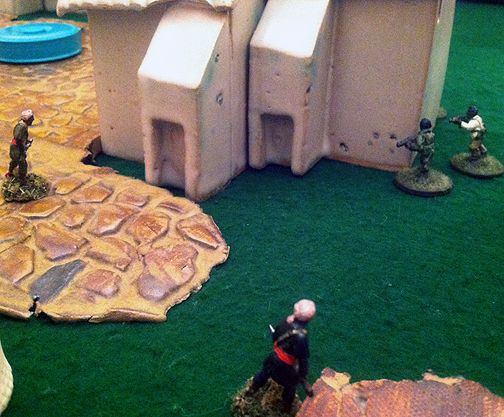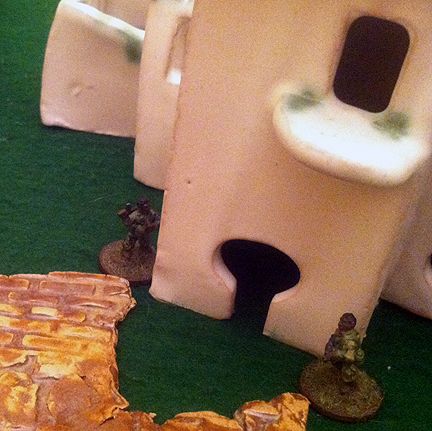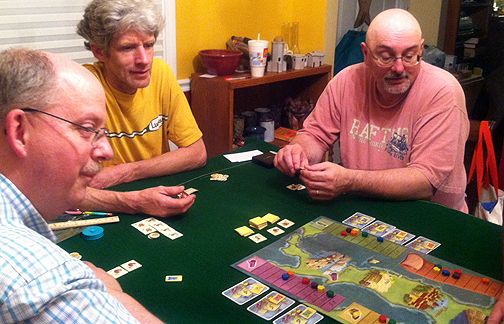 |
| "When You Don't Pay the Foederati..." my Round 5 entry. These 28mm mounted Dark Ages figures are from various sources. I ended up losing this contest by only 16 votes -- 229 vs. 213! |
I had primed these figures up months ago. They are to be used for my Dark Ages skirmish campaign that I intend to run for the guys at the Sunday night gaming group. I'd painted a batch of six mounted 28mm troops earlier, and these were the last of the ones I owned. In addition, they were pretty much the last figs I needed to paint up to be able to start the campaign.
So, when I saw one of the theme rounds for the Lead Painters League was "Ancients," I figured these would be a good fit. They're at the outer edge of the period, as many consider the Dark Ages to be more medieval than Ancient. I felt that would be splitting hairs, and figured I would bill them as mounted Germanic tribesmen used by the Romans as foederati (allies).
One major difference between how I paint up 28mm mounted and 15mm ones is I go for a more realistic look on the horses. In 15's, I had basic colors I painted them -- a couple shades of brown, a gray, black, white, etc. The only real variety was in the white spots I put on their legs or faces. A couple years ago, though, I painted up a large number of mounted Wild West figures as a commission for my friend, Joe. I did a lot of research, and found a page which has more than 70 simple colored drawings of various classes of horses. Since then, I've used that page to paint up my 28m horses, supplementing the small drawings with Google images of that type. I've been really happy with how my dappled grays have come out using real horses as a model. I also liked the way in this batch the chestnut turned out. His subtle coloring and shading makes him (her?) my favorite.
I thought I did a pretty good job on the details for these figs. I even tried to up my game by highlighting the colors on the shields. I learned that technique from Joe of the "An Hour of Wolves and Shattered Shields" website. Of course, he is 10 times better at me than it, but still, any improvement is an improvement. And that being my final goal for participating in the Lead Painters League, I am happy with how these came out. I thought my scene was staged fairly nicely. The title was supposed to be "When You Don't Pay the Foederati" (the guy in charge dropped the "when"). The implication is if you don't give your barbarian allies cash, they're going to take their payment by raiding villages. And that was the scene I depicted.
Prior to that round, I had mentioned to a friend that the previous 4 rounds had all been clear wins or losses. I'd had no close matches. I should have watched out what I wished for! I started out ahead in this matchup with some nicely-painted 28mm gladiators (though I thought mine were nicer...haha!). I was up all sunday in the voting, and by as much as 17 votes. It remained close, though, and was cut to a less than 10 vote lead by Tuesday. Suddenly, on Wednesday, the voting reversed. I was down by less than 10, and finally just under 20. It was a very strange reversal, I thought. Usually, early voting is a great indicator of how a race will go, but this was not the case in this round. When I checked earlier today (the final day of voting), I was down by more than 10 points, which will be a loss. If I somehow squeeze it to within 10 or less, it becomes a draw. No biggie -- just a bit mystifying.





